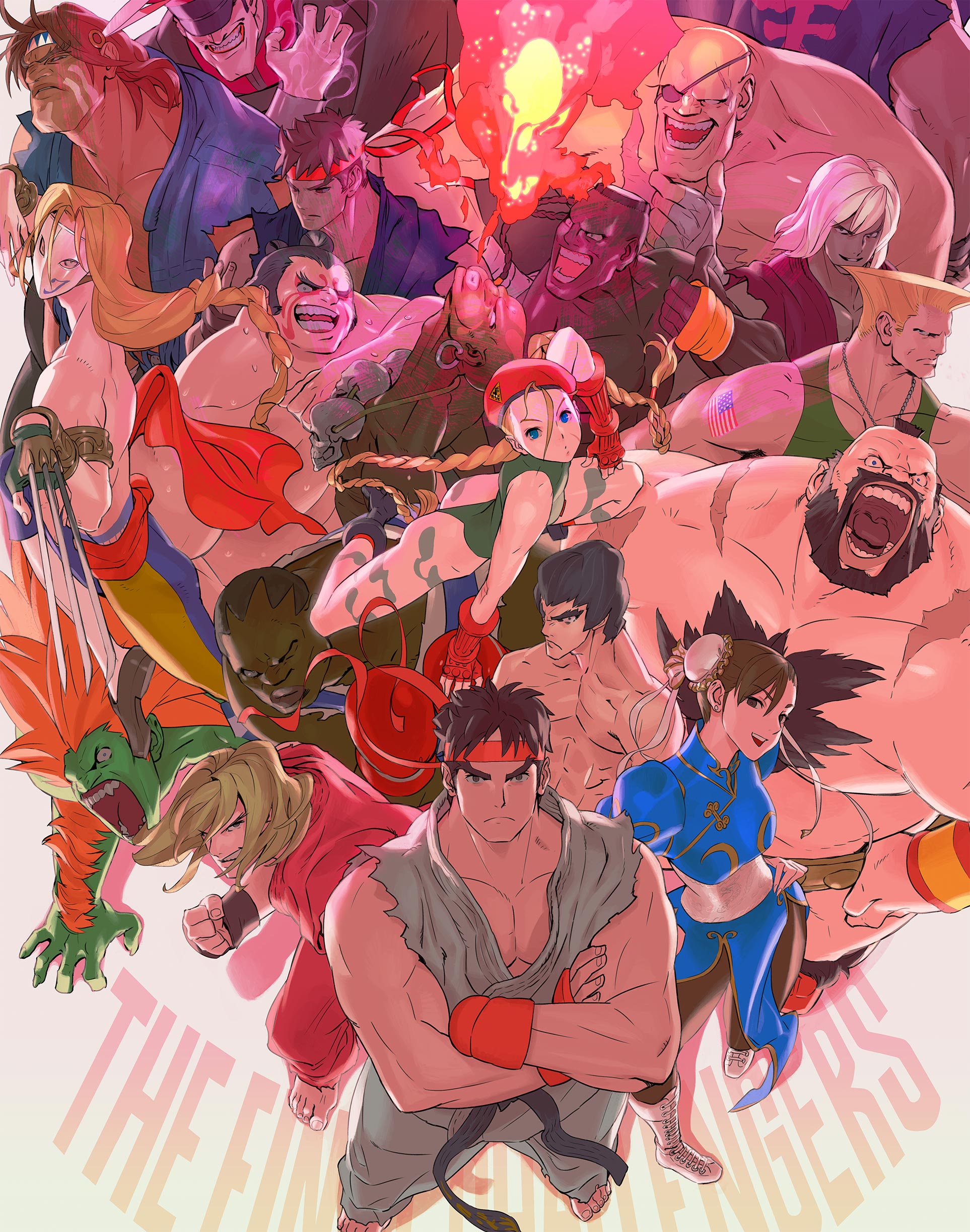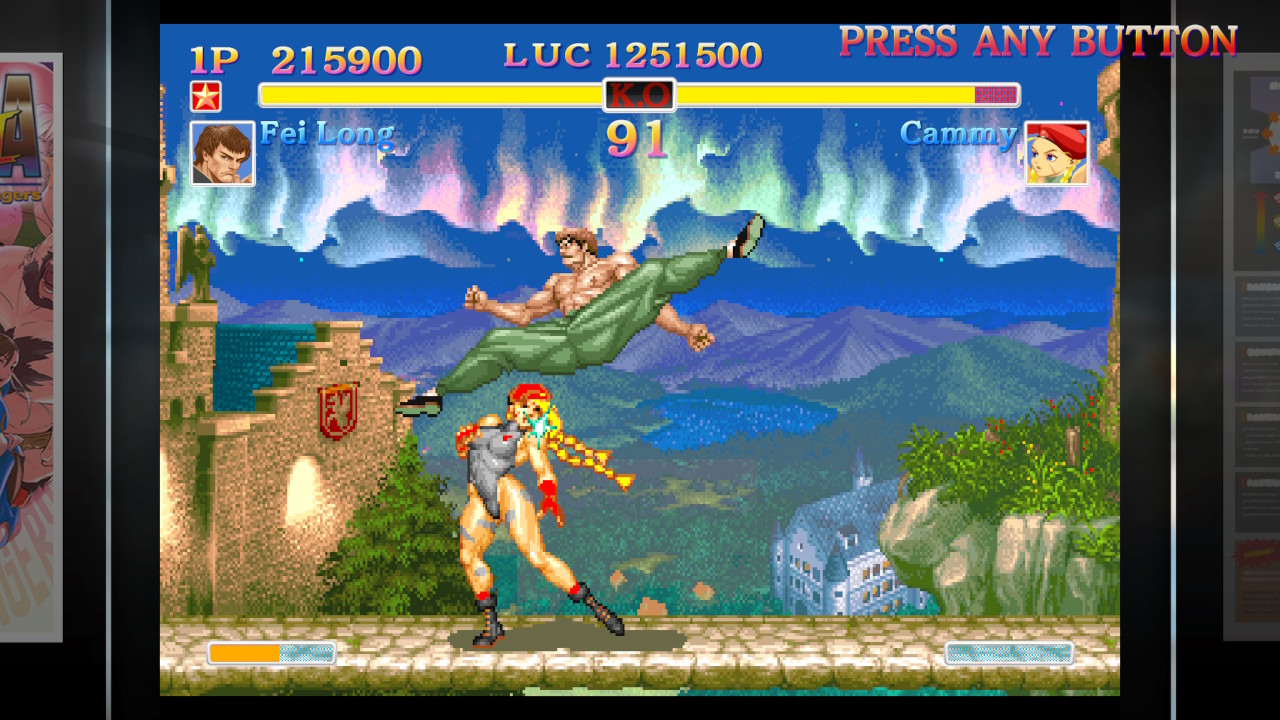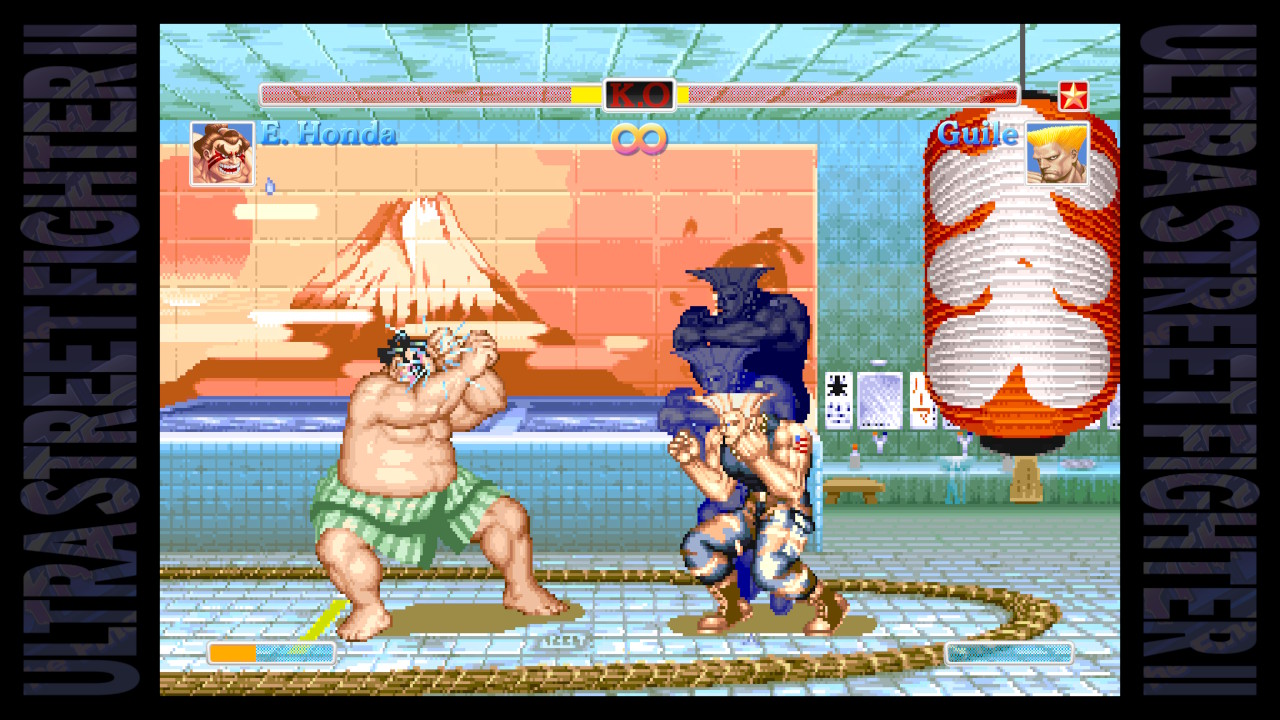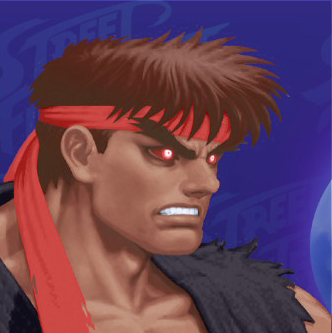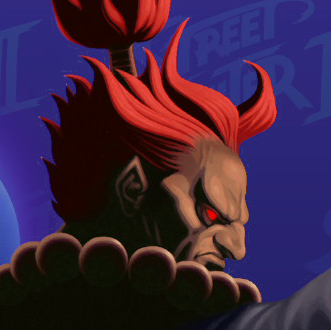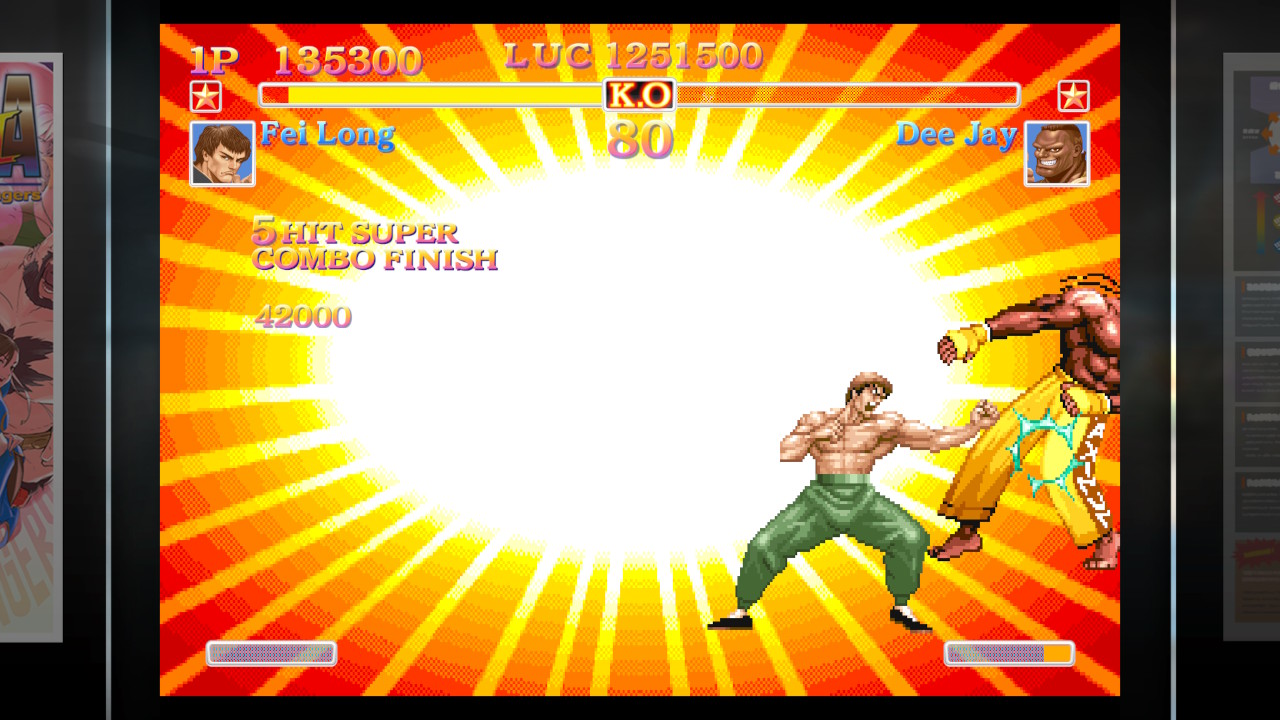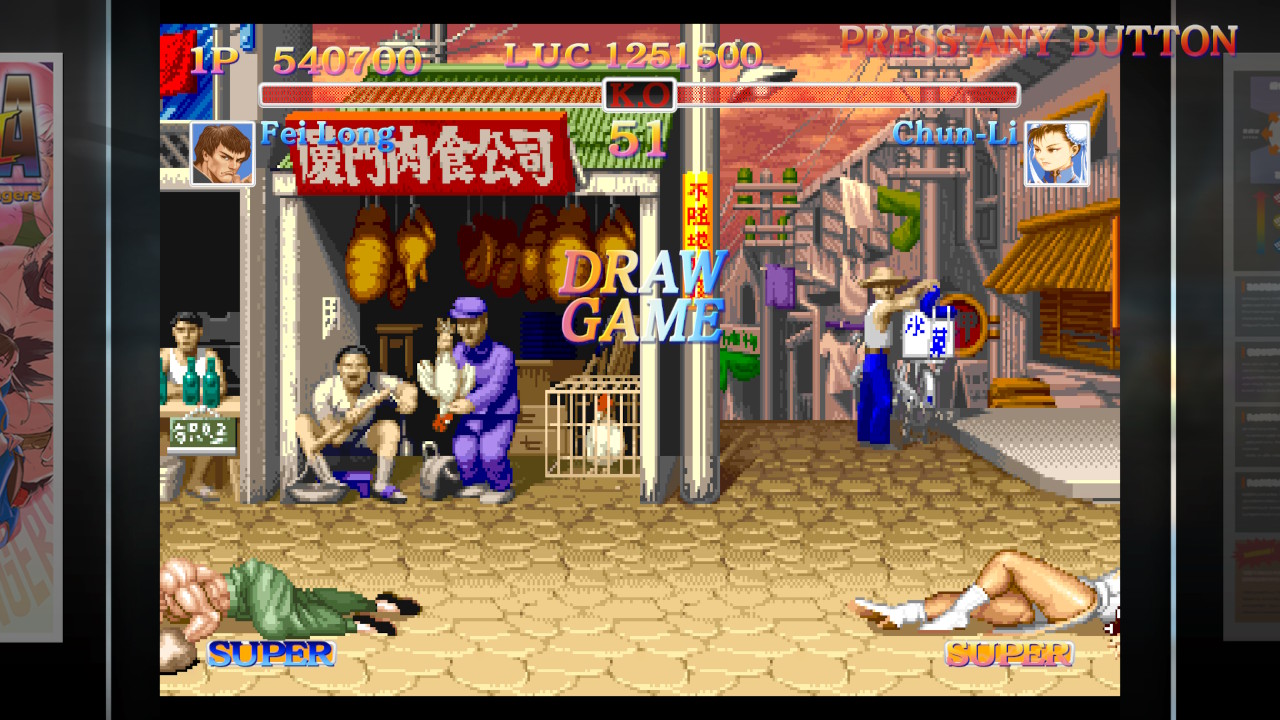Ultra Street Fighter II review
Let’s get this out of the way first, Ultra Street Fighter II is an immensely satisfying version of SF2. Especially for what’s essentially a portable version of the granddaddy of fighting games, this is a better-than-arcade-perfect port.
If you grew up playing SF2 on the Super Nintendo like I did, the visuals here are actually better than you remember. Stage backgrounds, for instance, are vibrant and feature more animation than we used to see on home consoles. More importantly, the gameplay is rock solid—assuming you have a proper controller to play it with—so throwing down in SF2 is just as fun today as it was in the mid-90’s.
Speaking of controls though, we should address the elephant in the room… When USF2 was announced, first I was pumped, but then I was perplexed. How would you play SF on this thing? The Switch is actually the first Nintendo console to omit a D-pad—the input feature that put the NES on the map and was subsequently adopted by pretty much every successful controller thereafter—and you need a D-pad in order to key in moves in SF. The Joy-cons have an analog stick and four separated directional buttons, but neither look adequately robust for SF.
So how does this game control on the Switch? What’s a World Warrior to do?
Pro Controller (or similar) setup
I don’t actually own a standard Switch Pro Controller (because they’re overly expensive) so unfortunately I can’t tell you how the game controls with that option. Still, a real D-pad is definitely my preferred input for fighting games, so you can bet that I’m mostly playing in Pro Controller mode. It’s just that in my case, I’m actually using a PS4 controller.
I’ve found that as long as you have a solid D-pad (or an arcade stick, if that's your preference) this game plays wonderfully. It’s just like being back on the couch, playing on the Super Nintendo...except with even better visuals, plua all the bells and whistles they’ve added through SSF2T. With the right controller, the gameplay here is heaven.
Verdict: Definitely the way to play.
Handheld mode
Playing USF2 in handheld mode is certainly not ideal, again due to the lack of a D-pad. And if you’re playing this game on the go, chances are terribly slim that you’d want to bring along a separate controller or—godforbid—an arcade stick. All in all though, I was pleasantly surprised at how well the game controls in handheld mode, whether using those little directional buttons or the analog stick. Playing around and switching liberally between the two inputs, I found them both to be decent, though admittedly imperfect, options.
Shockingly, I think I might actually prefer the analog stick to the directional buttons, at least for characters using quarter-circle inputs (Ryu, for example). For one thing, the L & LZ buttons more comfortable to reach if your thumb is positioned on the stick. Beyond that, it felt fairly responsive and accurate, somewhat reminiscent of playing Super Street Fighter IV on the 3DS. However, I could easily see someone preferring the directional buttons, especially for playing with charge characters (like Guile). Either way, you can easily move your thumb anytime you want to switch, so you could arguably use both.
Verdict: OK, but not great. A serviceable option.
Single Joy-con (held sideways)
Oh Jesus…no. This is not feasible. The Joy-cons are small, I’m talking hand-cramping-ly tiny. The analog stick, your sole directional input here, is awkwardly set in the center of the fun-size candy bar you’re struggling to use. Slap a strap on that Joy-con and the diminutive device becomes a bit easier to hold, but it’s still super difficult to work with. (And without a strap the L & R buttons are almost hidden, completely unusable.) Even for the most casual of matches, this does not work well enough to recommend.
Verdict: Nah, don’t even bother.
Presentation-wise, USF2 is fairly impressive. You can select “New” or “Classic” visuals, allowing you to play with the Udon-drawn HD style art (from SSF2T HD Remix), or the pixelated original graphics. The game’s sound can likewise be toggled, going with remixed music and newly recorded sound effects, or the classic stuff you grew up on. What’s more, you can switch your audio and visual options independently, allowing you to customize the experience to suit your tastes.
Speaking of sound effects, the new announcer for USF2 is laughably bad. And his voice samples are always used, even if you choose Classic sounds, so there’s no avoiding his cheesy delivery. Silly as his performance is though, a terrible announcer does feel strangely appropriately for SF, so I’ll allow it.
To get really nitpicky for moment, I have to say that I thoroughly dislike this game’s title: “Ultra Street Fighter II: The Final Challengers”. First off, SF has made such liberal use of hyperbolic words in their titles over the years that the ever-growing list of sequel designators has become a joke. Terms like “Turbo”, “Super”, and “Hyper” have been joined to the title so much that we eventually got “Super Street Fighter 2 Turbo X: Revival” on the GBA. We’re used to it. But “Ultra”...? That word doesn’t quite fit. In my opinion, "Ultra” doesn’t sound like SF because it’s too strongly associated with fellow 90’s fighting game series Killer Instinct.
Secondly, “The Final Challengers” doesn’t make any sense. This version of the game adds two more fighters to the roster, Evil Ryu and Violent Ken. But these are alternate versions of SF’s original protagonists, so they aren’t actually new characters at all. How can they be “The Final Challengers” if they are, in fact, the same two dudes who’ve been a part of this thing the entire time? The title is bad...so bad...and that bugs me.
As a bonus, USF2 includes 30 years of SF artwork in the form a gallery/digital scan of an out-of-print art book. And the art here is phenomenal! So much so that I’d say it nearly justifies the purchase of the game all by itself. That said, I was disappointed by the fact that the Switch won’t allow you to take screenshots of the SF art book. I mean, c’mon Capcom, why are you so intensely protective of art from an out-of-print book? It’s not like I could actually buy the book anywhere if I wanted to. (And I would totally buy this book, by the way.)
One thing conspicuously absent from the arcade experience are the bonus stages. There’s no car to crush or barrels to break like you remember from previous iterations of SF2. But why? Well apparently Capcom left bonus stages out of the previous SSF2T HD Remix, which featured the same Udon-drawn HD visuals. So my guess is that they weren’t interested in paying for any more HD art assets than they absolutely had to. A layered car sprite that gradually breaks apart, or a background only used for barrel breaking, was probably a bridge too far for old CAP. But I want to crush a car goddammit...
Speaking of bonuses, there’s fun new cooperative mode called “Buddy Battle” that’s reminiscent of SFA3’s “Dramatic Battle”. In this purely offline mode, two players team up to fight a series CPU opponents in 2-on-1 fights (either “Player & Player vs CPU” or “Player & CPU vs CPU”). Buddy fighters share one health bar, so damage taken by either will affect the pair equally. Health doesn’t fully refill after each round either and there are no continues. In an interesting twist, holding the taunt button for a period of time will slowly refill your health, so one fighter could fend off the opponent while the buddy fighter just chills in the corner, slowly rebuilding that vitality gauge.
The developers also added an entirely new, and completely unnecessary, mode called “Way of the Hado”. With a visuals lifted directly from SFIV, this mode has Ryu taking on waves of nameless Shadaloo soldiers and the player performs Ryu’s moves through Joy-con motion-controls. Even though no one is buying USF2 for a terrible minigame, I tried it out anyway, just for you. And—spoiler alert!—it absolutely sucks. The motion controls are sloppy and unreliable, turning an already shallow diversion into a frustrating mess. Two thumbs way down.
Mike and I booted up the ol’ Switch and played a few rounds to test out versus mode. All in all, it was pretty damn great. Sure, this versus mode doesn’t keep a character-by-character win-loss record (seriously Capcom, how hard is that?), and the menu system clearly assumes that players will most want to rematch bouts repeatedly with the same characters (which is not generally how the Kelleher Brothers play SF). But gameplay was sharp, responsive, and just as fun as we had expected.
The added characters, Evil Ryu and Violent Ken, are fun enough to play against each other, they but feel rather ridiculous alongside the game’s otherwise carefully balanced roster. It’s also worth noting here that OG Akuma is easily selectable within the full cast, and he’s a true boss character: unbalanced and overpowered. If you have friends that only play as Evil Ryu, Violent Ken, or Akuma, you’re in for an uphill climb. Still, it’s silly fun, and I kind of enjoy having the brainwashed Ken (from the classic animated movie) playable in a SF2 game.
All in all, I would recommend USF2 for old-school Street Fighter fans looking to play versus matches on the couch. The nostalgic payoff is strong and, in my opinion, well worth it. There is one more lingering question, however…
With Street Fighter 30th Anniversary Collection also released on the Switch, isn’t this game now irrelevant? SF30th even has its own huge collection of SF art and scanned historical documents! The answer to that question is really subjective, but I’ll give a tremendously non-committal, “Yes and no”.
The thing about SF30th is that it’s a collection of arcade game roms, so the version of each game included is the original arcade version. This means that its version of Super Street Fighter II Turbo (the closest iteration to USF2) doesn’t include any of the additions, balance adjustments, or even bug fixes that Capcom has made to the game since 1994. So it really comes down to what kind of SF2 experience you are looking for.
If you are a fan of the Udon-drawn HD visuals then USF2 will probably still be your best option on Switch. If you like easily selecting Akuma for online play, or you want to play as Evil Ryu or Violent Ken at all, then this will still be your ideal version. If you appreciate the additional modes—Buddy Battle, the Color Editor, want all your online Player Data, or a more fully fleshed out Training mode—then Ultra is still the SF2 for you. Plus there's one more aspect that you might not even consider: multi-button control mapping.
In USF2, you can map multi-button inputs—such as LP+MP+HP or LK+MK+HK—to the controller button of your choice. This makes it far simpler to perform Zangief's lariat or Dhalsim's teleport with ease. SF30th bizarrely omits that option, however, only allowing you to map the six arcade buttons to your controller layout, one-for-one. If you're using an arcade stick, this might not matter much at all. But for gamepad players like myself, it is a HUGE oversight. And potentially, that's the biggest reason why someone might still prefer this version of Street Fighter II.

